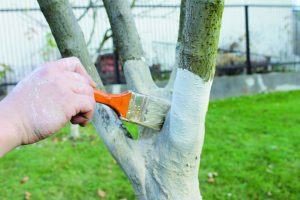Why is the cherry plum variety July rose good and why it is worth growing
Cherry plum July rose opens the fruit season with its large, red-pink fruits with yellow pulp. The hybrid form of the plant is liked even by those who are not particularly enthusiastic about its taste. The taste of July rose is balanced, sweet and sour. The fruit is suitable for versatile culinary use. The cultivar is distinguished by its unpretentious care and strong immunity.
The content of the article
Cherry plum July rose
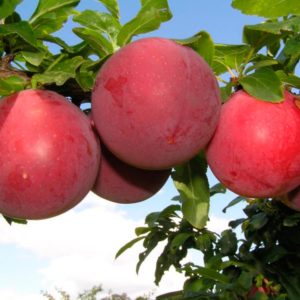
The July rose is a hybrid created on the basis of the Kuban comet cherry plum variety and the Skoroplodnaya Chinese plum. Free pollination was used in the work. The method provides for obtaining hybrids pitted parent tree. Employees of the All-Russian Research Institute of Plant Production named after V.I. N.I. Vavilova (Krasnodar Territory). Authors - G.V. Eremin and S.N. Zabrodina.
The cultivar was entered into the State Register of Russia in 1999. Another name is the Early Comet. The plant has received the best characteristics of the parent tree - high productivity and excellent fruit taste. The main difference from the Kuban comet is its early maturation (end of June).
Description of the hybrid and characteristics of the fruit
The tree is compact, 2.5-3 m high. The crown is moderately dense, flattened-rounded. The stem is of medium thickness, even. The bark is gray with small lenticels.
Shoots are arcuate, horizontal, with weak branching, 25-35 mm in diameter. The bark is red-brown, the tops of the growing shoot are green. Bouquet branches are short, life span is 2-3 years. The buds are rounded, with green scales, tightly attached to the shoot.
The leaves are large, oval, the top is sharp. On an arcuate base there are glands, the edges are weakly wavy, double-clawed. The surface is smooth, glossy, green, the back side is slightly pubescent. Sheet size - 44 x 64 mm. As the leaves grow, they take on different positions - first they "look" up, then horizontally. Petioles with a bright anthocyanin color, deep groove.
The flower diameter is 18-20 mm, the corolla is slightly closed. The petals are white, small in size: 7 mm long, 7.5 mm wide. The shape is rounded, medium corrugated, the top is wavy. Stamens weakly curved, yellow anthers. The length of the pistil is 10-11 mm. The calyx is bell-shaped, the sepals fit tightly to the petals.
The fruits are large, weighing 29-32 g, the skin is elastic, dense, difficult to remove, dark red with a pink tint. The pulp is moderately dense, yellow, moderately juicy, granular and fibrous structure. The aroma is weak. Sweet and sour taste - 4.4 points. Sugar content - 7-7.8%, acids - 2.3%, dry matter - 9.8-11%, ascorbic acid - 5-6.7 mg.
After cutting, the pulp darkens slowly. The weight of the seed is 0.7 g, it is partially separated from the pulp.
The flowering period is in April, the fruits ripen at the end of June. The first crop is harvested 3-4 years after planting. The fruits ripen unevenly, so the harvest period is extended.
Fruiting is regular, stable without pronounced drops and jumps. Average yield - 10 kg per tree.
In the State Register, the July rose is listed as self-fertile, but the originator declares that it is partially self-fertile. Additional pollination is required to increase yields. Ideally suited for this purpose varieties Traveler and Found.
The fruits are suitable for universal consumption.Compotes, jam, juice are prepared from them, they are eaten fresh.
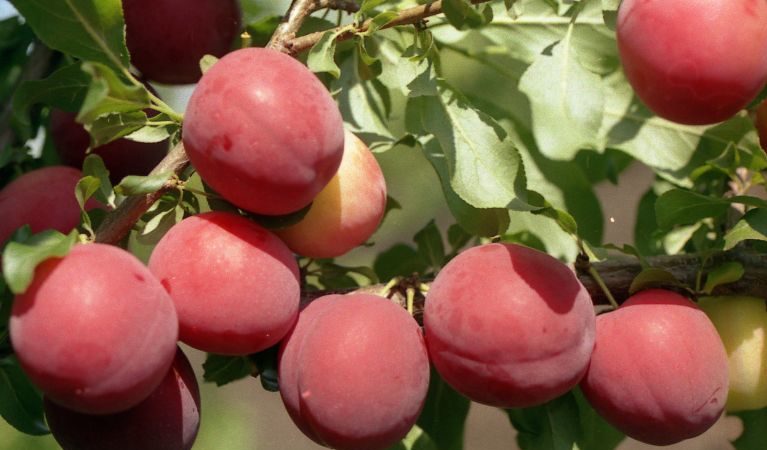
Optimal growing conditions
Creating favorable conditions for growing cherry plum The July rose is the key to high productivity and plant health. The crop grows best in the southern area, subject to protection from cold winds.
Landing perform in light soil with slightly acidic, neutral pH = 6.5-7.2 units. Wetlands with a high groundwater table are not suitable for this purpose.
Suitable regions
The cultivar received permission to grow in the North Caucasus region (Rostov region, Stavropol and Krasnodar territories, North Ossetia - Alania, Crimea, Adygea, Ingushetia, Dagestan, Chechen and Kabardino-Balkarian republics).
Sustainability
The hybrid is highly resistant to frost and moderately resistant to moisture deficit. The culture quickly adapts to the growing area and climate. Transportability and keeping quality of fruits is average.
How to grow cherry plum July rose yourself
Planting and growing a July rose hybrid does not cause difficulties even for novice gardeners. It is important to select healthy seedlings, plant it according to all the rules and pay due attention to care.
How and when to plant
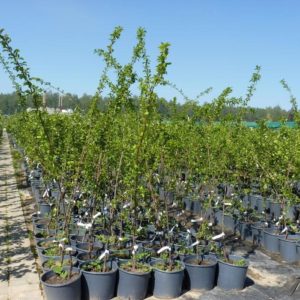
Planting date for cherry plum falls in early spring. It is important to carry out the procedure before the start of sap flow, when the seedlings are at rest. Planting material with a closed root system is planted in April - October, with an open one - in the fall. The root system should be clean, fibrous, without damage and growths, the bark of the trunk and branches should be smooth.
Planting material is buried in the garden to keep it until spring. To do this, a pit is made on the site with a depth of 30-40 cm and a length of 80-100 cm. 5-10 cm of river sand is poured at the bottom and a seedling is laid on top. The roots are buried in the sand, and the top is left at the edge of the pit. To prevent moisture loss, the roots are immersed in a solution of clay and mullein. With the arrival of the first frosts, the pit is completely covered with soil, leaving the top of the seedling on the surface.
Reference. Planting material can be stored in the basement at a temperature of 0 ... + 5 ° C.
On the site, they dig a landing hole with a depth of 70-80 cm. The poorer the soil, the larger the diameter of the hole. When planting cherry plum in heavy, clogged soil, the bottom of the pit is lined with broken brick, crushed stone or expanded clay 10-15 cm thick. On sandstones, a layer of clay of the same thickness is placed on the bottom to retain water.
Peat, turf, humus, sand are mixed in a large container in a ratio of 1: 1: 1: 1, 2 liters of wood ash and 300 g of superphosphate are added. The pit is filled with soil mixture and covered with a dense film or roofing material.
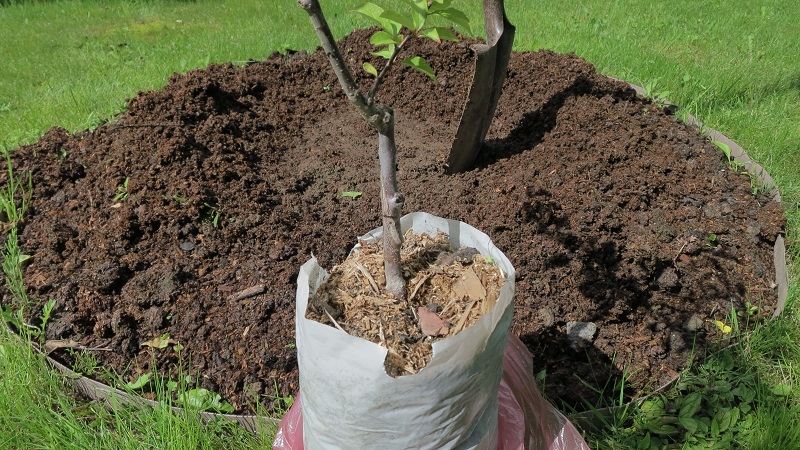
Step-by-step instruction:
- With the arrival of spring, the planting material is dug up or taken out of the basement and placed in a bucket with a solution of "Epin", "Heteroauxin" or "Kornevin" for 3-4 hours.
- The planting hole is opened and part of the nutrient soil is raked out for free placement of the seedling inside.
- A hill is formed in the center, a wooden support is driven in at a distance of 10-15 cm, a seedling is installed, the roots are carefully distributed. The root collar is not buried.
- The pit is covered with soil and compacted.
- The tree is fixed to the support with elastic material so as not to transfer the bark.
- The near-trunk circle is watered with settled water so that it reaches the roots.
- After the liquid is absorbed, the soil is loosened and covered with hay, compost, rotted sawdust, and peat.
- The central conductor is shortened by 60-80 cm, branches - up to 20-30 cm.
How to care
Cherry plum care July rose is not burdensome. Given the average drought resistance of the plant, the trees are watered every 3-4 weeks. The optimal moisture depth is 25-35 cm. Abuse of the procedure will lead to decay of the measles system. The first watering is performed after flowering. Then the soil is loosened and mulched to stop the growth of weeds.
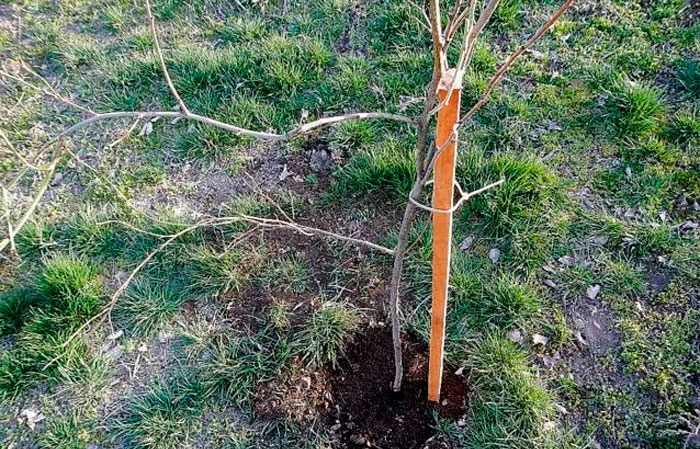
Top dressing
Cherry plum is fed 3-4 years after planting. Top dressing scheme:
- Mineral sprinkle with top dressing around the trunk circle and dig up the soil. Use:
- phosphoric (superphosphate) - make 20-30 g / 1 m² annually in October;
- nitrogen (nitroammofoska, urea, ammonium nitrate) - 20-30 g / 1 m² annually in April;
- potash (monophosphate and potassium sulfate) - 10-20 g / m² during irrigation annually in late May - early June.
- Organic sprinkle with dressings near the trunk circle and dig up the soil. Apply:
- humus, compost, low-lying peat - 5-10 kg / 1 m² are applied once every 3 years in April or October;
- concentrated infusions - 1 l / 1 m² every year at the end of May - beginning of June.
Concentrated infusion recipe:
- 2 l mullein;
- 1 liter of chicken manure;
- 5-7 kg of freshly cut grass.
Any of the components is poured into 10 liters of water and insisted for 5-10 days in a warm room. Dilute the concentrate with water 1:10 and pour over.
Pruning
Types of cherry plum pruning:
- Formative. The tree is shaped like a bowl. For 2-3 years after planting, 3-4 branches are chosen, which in the future will become skeletal. Shoots should be located at a distance of 15-20 cm. They are cut off by 30-40 cm, the rest - on a ring. After 1-2 years, 2 second-order shoots are formed on the skeletal branches. The distance between them should be 50-60 cm. They are shortened to 30-40 cm, the rest are completely cut off. In the future, the same length of branches is maintained.
- Regulatory. The procedure is performed in early spring in order to control the density of the crown, ensure good lighting and ventilation.
- Supportive. The trees are minted in June, when young shoots are actively growing. They are cut by 10-15 cm, thereby provoking branching and budding for the next year.
- Sanitary. Trees are cut in late autumn after the sap flow stops. Dry branches damaged by disease and insects are completely cut off. The same procedure is repeated in the spring after the snow melts.
The secateurs are sharpened, disinfected with 1% copper sulfate solution, medical alcohol or 3% hydrogen peroxide solution. Slices are covered with garden var, hemp and knots do not leave.
Diseases and pests
The cherry plum's resistance to major diseases is excellent. There is a persistent immunity to clasterosporium disease. Despite this, it is recommended to carry out preventive treatment against fungal infections. The terms and methods of processing are presented in the table.
| Type of work | Processing method | Timing | Result |
|---|---|---|---|
| Collection of dry foliage, weeds, plant residues | Manual collection | Late fall | Destruction of wintering insects, fungi |
| Whitewash
|
Slaked lime solution with 1% copper sulfate solution
|
Fall | Prevention of sunburn and insect attacks |
| Treatment of the crown and soil with a solution of copper sulfate | Use a 3% solution of copper sulfate or 5% solution of ferrous sulfate | Late autumn, early spring
|
Prevention of fungal diseases and pests
|
| Pesticides
|
DNOC once every 3 years, then - "Nitrofen" | Early spring | Prevention of fungal diseases and pests |
| Systemic fungicides
|
"Horus" - 7 days, "Quadris" - a week before harvest
|
After flowering, then every 2-3 weeks | Prevention of fungal diseases
|
Insecticides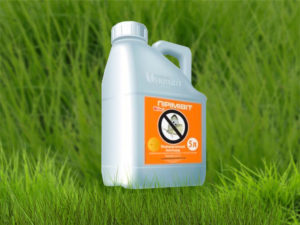 |
"Decis", "Fufanon", hereinafter - biological products ("Iskra Bio") | After flowering | Getting rid of pests |
Digging soil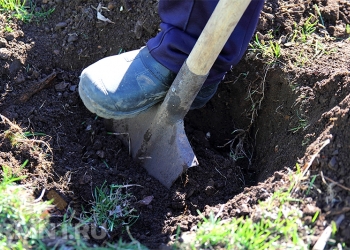 |
To the depth of a shovel bayonet | Late fall | Beetles and larvae are defenseless and die from the cold |
In the fight against insect pests, prevention is more effective. The table shows the main devourers of cherry plum and ways to destroy them.
| Pest | Signs | Control methods |
|---|---|---|
Plum moth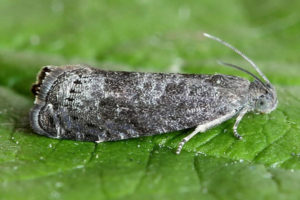 |
Small holes with droplets of gum on the fruit | Prevention |
Puffy leg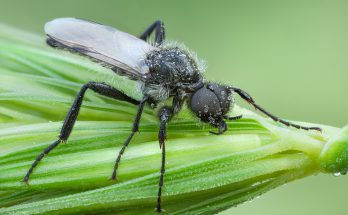 |
Shriveled green fruits, eaten away bone and larva inside | Prevention, manual collection of beetles in the morning |
Plum sawfly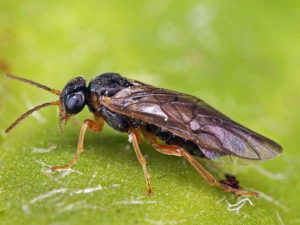 |
Beetle larvae inside the kernel of the bones | Prevention |
Advantages and disadvantages of cherry plum July rose
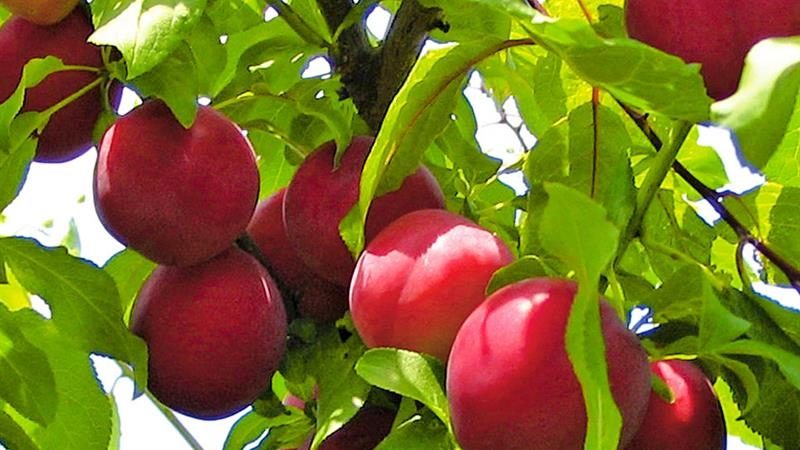
Benefits of the July Rose:
- early fruiting;
- high productivity;
- pleasant sweet and sour taste;
- large fruits;
- strong immunity;
- universal use in cooking.
Disadvantages:
- uneven ripening of fruits;
- average drought resistance.
Gardeners reviews
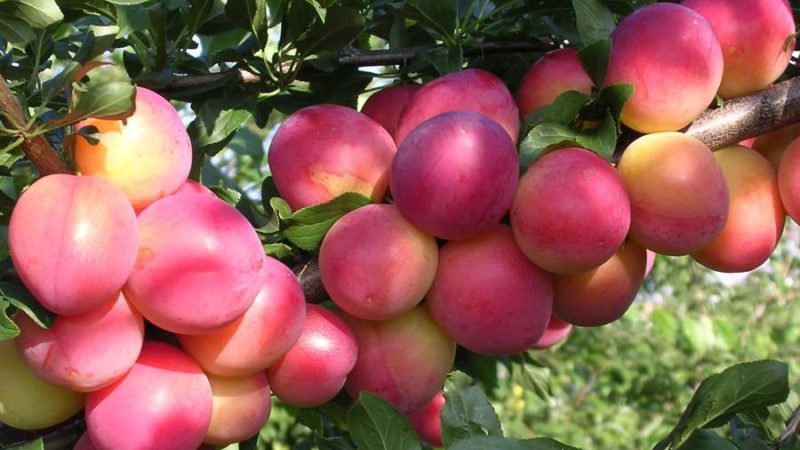
The July rose hybrid is popular with gardeners.
Valery, Alushta: “In my garden cherry plum July rose has been growing since 2010. The description of the variety is completely true. As it grew, it formed a neat crown. The fruits are very sweet compared to other species, especially wild ones. We eat most of the cherry plums straight from the tree, the rest we put on compotes, juices and jam. The fact that the fruits ripen unevenly is a great advantage for me. Ripe plums fall off, so grass grows under the tree so that they don't beat. The variety is very successful, the plant is not sick with anything, so I don't use chemicals to treat it. "
Inna, Aksai: “I am not a fan of cherry plum, for me it is too sour, and making jam requires a lot of sugar. But 7 years ago, my father gave us a July rose tree. We are delighted with this hybrid. The plant has strong immunity, rarely suffers from fungal diseases, except in rainy years. The fruits are juicy, large, moderately sour. I cook compotes and jam from cherry plum, I enjoy eating fresh. "
Conclusion
The July rose hybrid is popular in the North Caucasus region, where nature has created favorable conditions for growing a cultivar. It is distinguished by early ripening, high yield (about 10 kg per tree), immunity to fungal infections and unpretentious care. Large fruits have a thin, dark red skin with a pink tint, a juicy yellow pulp and a pleasant sweet and sour taste.
